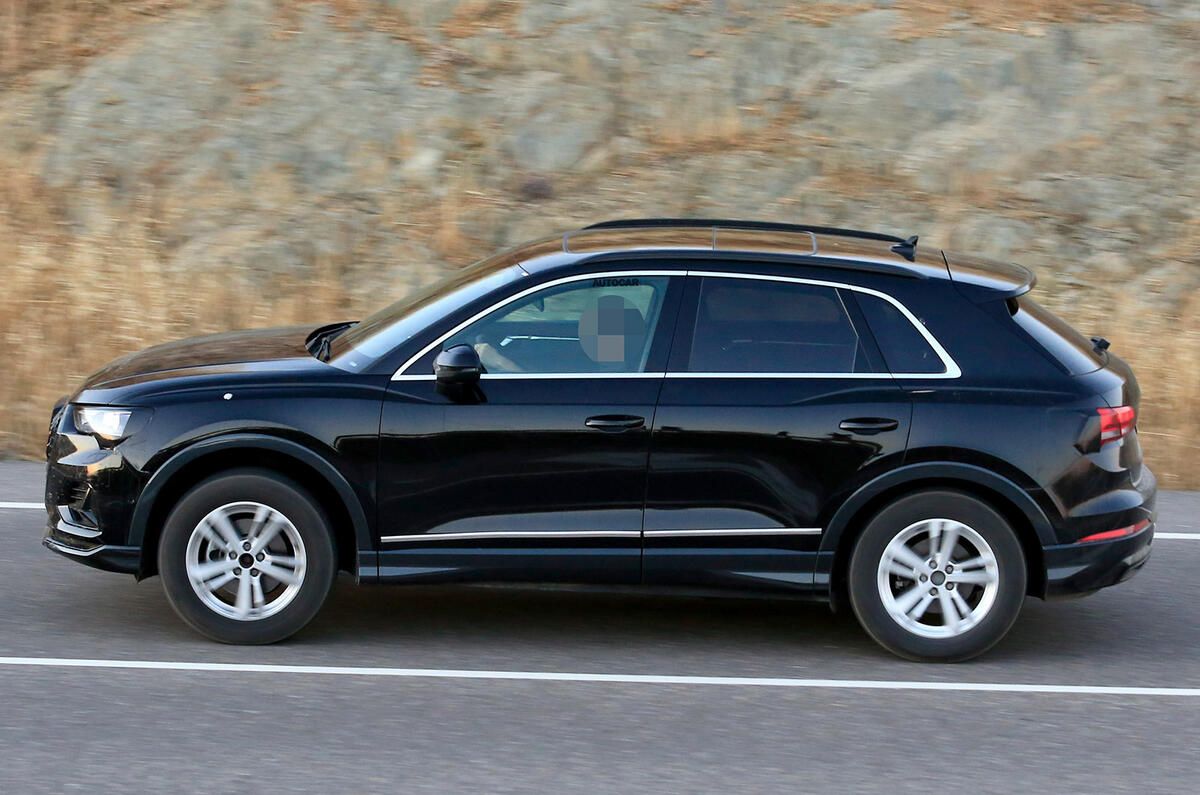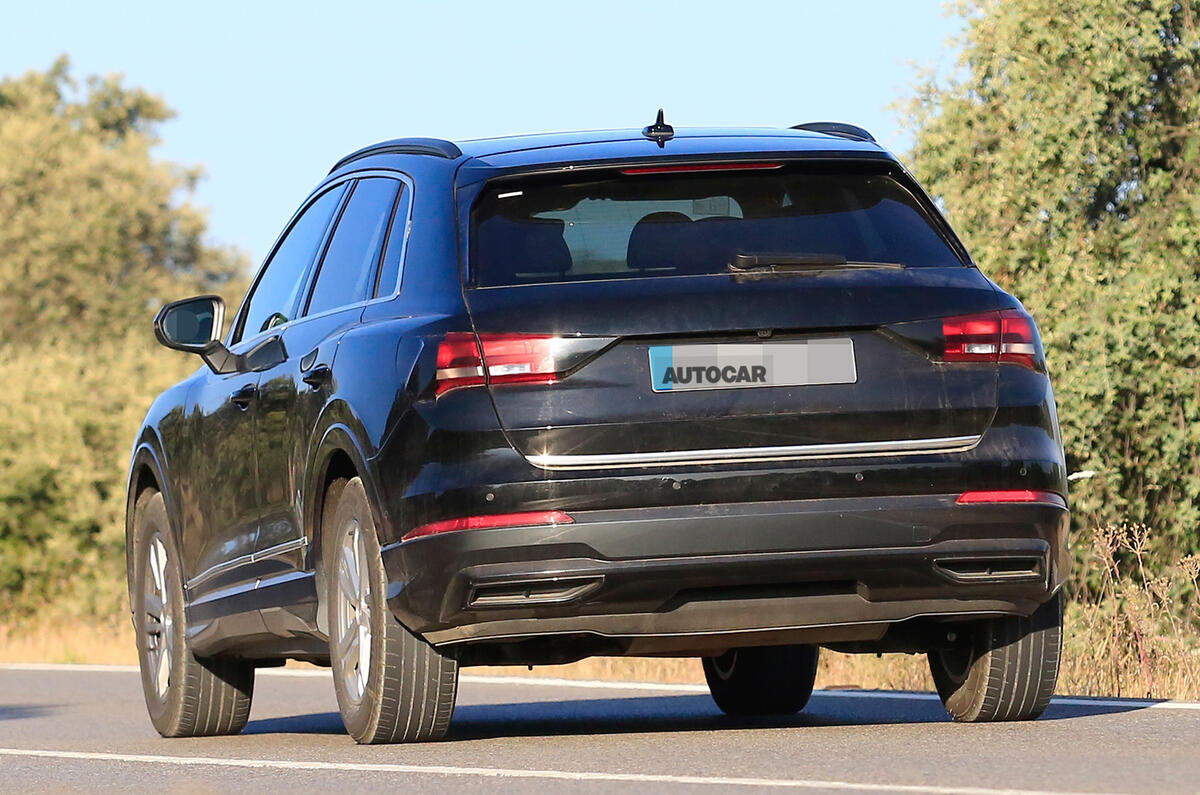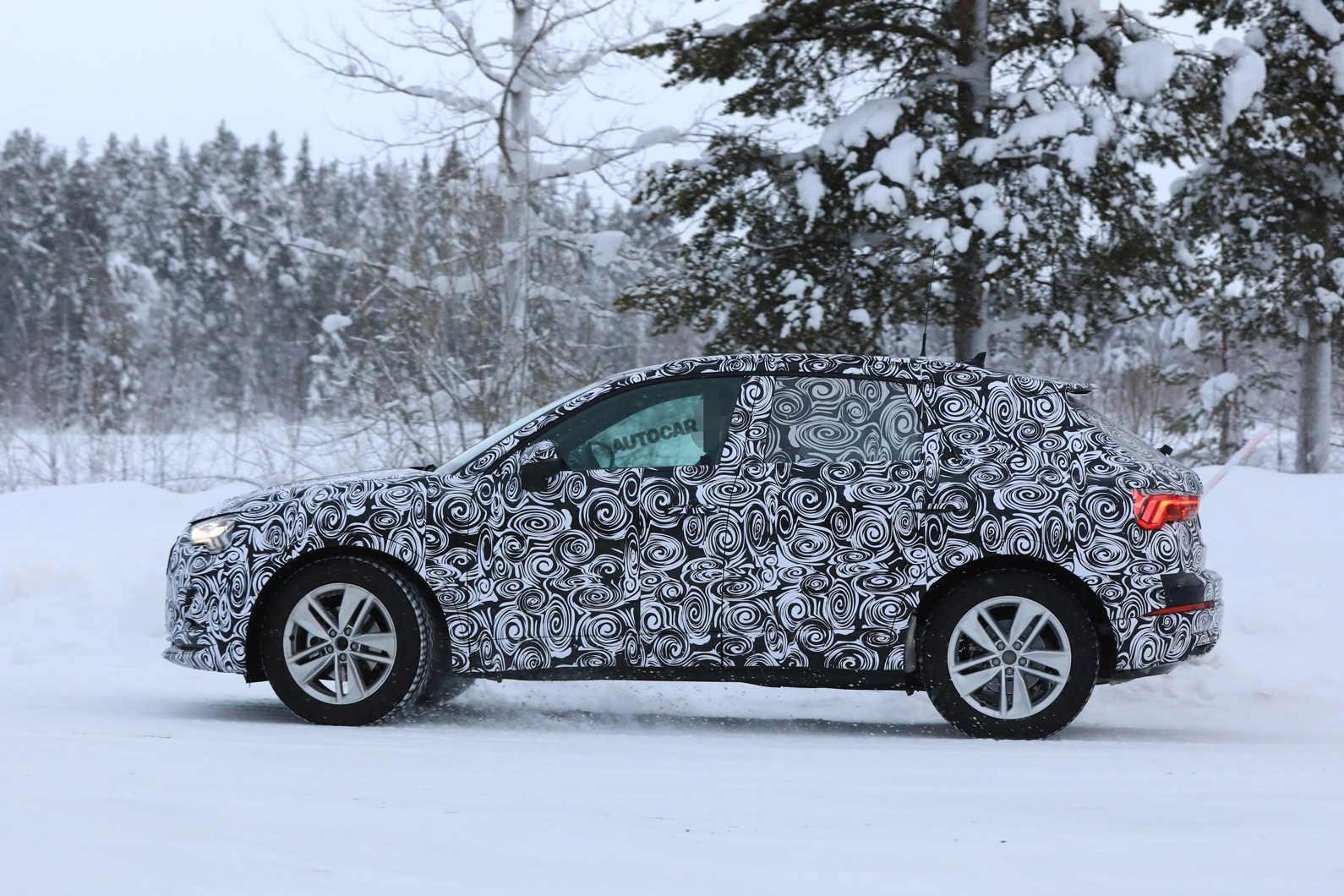
The second-generation Audi Q3 is fast approaching its launch, so prototypes are beginning to shed their disguise ahead of the car's official unveiling later this month.
Styling of the BMW X1 and Jaguar E-Pace rival follows that of the much larger Q8 closely, with similar lines and a near-identical front end to its sibling. A subtle, facelift-like generational change was also given to the new Q5 by the brand, with only minor changes to the design between the two cars.
Audi's engineers are also beginning to turn their attention to the hot SQ3 variant. The SQ3 is likely to arrive at the same time or very soon after the regular Q3. Spy photographers have captured the standard car during recent spells of winter testing, and now they've spotted the higher-specification version for the first time.
In typical Audi form, the SQ3's appearance is only lightly adjusted, with a lower ride height and larger wheels the clearest signals to its performance. It will serve as the range-topping model until an even hotter RS Q3 is produced.

The next Q3, a small SUV rival to the Mercedes-Benz GLA and Volvo XC40, has new underpinnings, a roomier interior and contemporary electric architecture supporting many of Audi’s latest driver assistant systems. The changes are so extensive that sources call it a "comprehensive re-engineering", which comes as part of a Volkswagen Group programme that's also resulted in the launch of the Skoda Kodiaq and Seat Ateca and the latest Volkswagen Tiguan.
The new Q3 has grown in order to distance itself from its cheaper, smaller sibling, the Q2. Nothing is official yet, but sources suggest its length extends to around 4450mm and its width beyond 1860mm - increases of 60mm and 30mm respectively.
In comparison, the Q2 measures 4190mm long and 1790mm wide, while the recently launched second-generation Q5 is 4660mm long and 1890mm wide.
Based on the Volkswagen Group’s widely used MQB platform, the new Q3 is claimed to have shed up to 50kg over today’s model, which sits on older PQ35 underpinnings dating back to the second-generation A3 of 2003. This should bring the planned front-wheel-drive entry-level model, which is set to use a 128bhp 1.5-litre four-cylinder petrol engine, down to less than 1350kg, despite the Q3's growth.

As well as being lighter, the MQB architecture also provides the new Q3 with added structural integrity. Audi insiders cite a significant improvement in static and dynamic rigidity as being crucial to enhancements in the isolation of vibrations and the lowering of overall noise levels – factors that promise to make it a more adept long-distance proposition.
The new Q3 receives more distinctive styling than today’s six-year-old model, with a prominent eight-corner single-frame grille, thin angular headlights with LED graphics and a heavily structured bumper assembly dominating its front end.
Further back, there are larger wheelhouses, a more pronounced wheel arch flaring, door-mounted mirrors and a more defined shoulder line along the flanks. A longer wheelbase, which is said to have grown by 50mm to 2650mm, also allows the adoption of slightly longer doors. At the rear, the new Q3 appears to eschew the clamshell-style tailgate for a simpler (and cheaper to produce) aperture.

Inside, the Q3 receives a newly designed interior with a dashboard heavily influenced by that already seen in the latest A3. With a longer wheelbase liberating rear seat leg room and added width providing greater front and rear shoulder room, the car is described as being significantly more spacious inside than its predecessor. A slightly longer rear overhang is also claimed to provide an added 20 litres of boot capacity, making for a total of 440 litres.
Among the more upmarket features available for the new Q3 will be Audi’s Virtual Cockpit display with HD graphics, a head-up display unit, a 9.2in touchscreen infotainment system, wireless smartphone charging and a full suite of connectivity functions supporting Apple CarPlay and Android Auto smartphone mirroring.
The new Q3 will offer a variety of driveline combinations, including front-wheel and four-wheel drive in combination with either a six-speed manual or seven-speed automatic dual-clutch gearbox.
The headline engine for the RS Q3 will be Audi’s recently revamped turbocharged 2.5-litre five-cylinder petrol unit developing up to 395bhp. It will be supported by an SQ3 model running a detuned version of the same engine at around 335bhp.

Other petrol engines will include a new turbocharged 1.5-litre four-cylinder unit. This joins the Q3 line-up as a replacement for the turbocharged 1.4-litre four-cylinder engine, likely offering two states of tune at 128bhp and 148bhp. Also planned, although not expected to feature in every market, is an updated version of Audi’s turbocharged 2.0-litre four-cylinder engine, delivering 248bhp.
Despite the uncertainty surrounding the future of diesel, Audi is sticking to its plans to launch the new Q3 with a turbocharged 2.0-litre four-cylinder common rail engine in up to three states of tune: 148bhp, 187bhp and 237bhp. All will feature an SCR filter and AdBlue injection for Euro 6 compliance.
Also under development, although unlikely to be seen at launch, is a plug-in hybrid version that will combine the turbocharged 1.5-litre four-cylinder petrol engine with an electric motor. This will be an updated version of the Volkswagen Group’s modular plug-in hybrid system, which is claimed to provide a combined output of more than 200bhp and an electric range of up to 31 miles at a speed of up to 81mph.
Audi sources involved in the engineering of the new car also confirm that the company is working on an electric version of the second-generation Q3 as part of plans to meet China’s New-Energy Vehicle regulations. The front-wheel-drive Q3 e-tron, conceived to compete against BMWand Brilliance’s Zinoro 60H, is likely to run a similar driveline system to the Volkswagen e-Golf, with a 134bhp electric motor and 35.8kWh lithium ion battery providing a range of up to 186 miles between charges.










